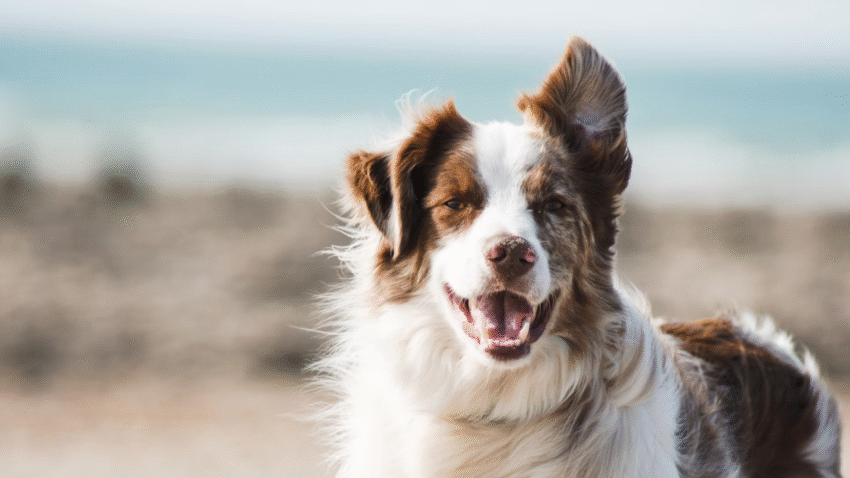Introduction
Whether you’re switching to a higher-quality brand, trying a new protein, or adjusting to life-stage needs, changing your dog’s food must be done with care. A sudden switch can cause stomach upset, diarrhea, and even lead to long-term digestive issues.
In this guide, you’ll learn exactly how to transition your dog to a new food safely—step by step. From how long the process should take to how to recognize problems early, this article gives you everything you need to make the switch with confidence.
Why Transitioning Food Matters for Dogs
Dogs have sensitive digestive systems that thrive on consistency. Even if you’re switching to a healthier food, doing it too quickly can:
- Upset your dog’s stomach
- Cause vomiting or diarrhea
- Create food aversions
- Lead to refusal to eat
- Trigger allergies or sensitivities
A gradual transition allows the digestive system to adjust to new ingredients, protein sources, and nutrient levels—reducing stress and increasing success.
Step-by-Step Guide to Transitioning Your Dog to New Food Safely
📆 Step 1: Plan a 7–10 Day Transition
The golden rule of switching dog food is “slow and steady.” Most dogs do best with a 7 to 10-day gradual change.
Basic guideline:
- Days 1–2: 75% old food, 25% new food
- Days 3–4: 50% old food, 50% new food
- Days 5–6: 25% old food, 75% new food
- Days 7+: 100% new food
For dogs with sensitive stomachs or a history of digestive issues, extend the transition to 10–14 days.
🍽️ Step 2: Maintain Meal Consistency
Stick to your dog’s normal:
- Meal times (e.g., 8am and 6pm)
- Portion sizes (adjust only after transition)
- Feeding location (quiet and calm)
This minimizes stress and helps your dog focus on the change in food—not changes in environment.
🦴 Step 3: Choose a Compatible New Food
To reduce the risk of digestive upset:
- Match protein type if possible (e.g., chicken-to-chicken or salmon-to-salmon)
- Avoid switching from dry to wet or raw immediately
- Stick with trusted, high-quality brands
- Check for allergens (grain, soy, chicken, beef) if your dog has a sensitive system
💡 If you’re switching food types (e.g., dry to wet or kibble to raw), consider consulting your vet for a tailored transition plan.
🐶 Step 4: Monitor Your Dog’s Reaction Daily
Watch for changes such as:
- Stool texture (soft, runny, or firm)
- Vomiting or excessive gas
- Itching or ear infections (sign of food allergies)
- Lethargy or hyperactivity
- Appetite changes
A little soft stool on Days 2–4 is common. Persistent diarrhea or vomiting means it’s time to slow down or consult your vet.
💩 Step 5: Track Stool Quality During Transition
Use a stool rating scale to assess digestion:
- Score 1: Very runny, watery (problem)
- Score 2–3: Loose, unformed (monitor)
- Score 4: Ideal (firm, log shape)
- Score 5: Very dry or crumbly (possible dehydration)
If stool worsens consistently, drop back a day or two in the transition schedule and slow things down.
🧪 Step 6: Add Digestive Support If Needed
Some dogs benefit from added gut support during the transition:
- Pumpkin puree (unsweetened): 1–2 tbsp for fiber
- Probiotics: Supports healthy gut flora
- Bone broth: Encourages hydration and eases digestion
- Digestive enzymes: Especially for older dogs or those with past issues
Always introduce supplements slowly and use dog-safe versions only.
🛑 Step 7: Know When to Stop the Transition
If your dog shows severe or persistent symptoms, pause the transition and return to their old food for 2–3 days before trying again. This is especially important if symptoms include:
- Refusal to eat
- Repeated vomiting
- Blood in stool
- Extreme lethargy
- Skin reactions
You may need to try a limited-ingredient diet or change protein sources if your dog has a sensitivity.
🐾 Step 8: Reassess After 2–4 Weeks on New Food
Once the transition is complete and your dog is on 100% new food, give them 2 to 4 weeks to fully adjust.
Watch for:
- Improved energy levels
- Shinier coat
- Better stool quality
- Increased appetite and engagement
- No signs of allergy or stomach upset
If your dog seems healthy and happy—great! If not, you may need to tweak portions, protein source, or brand.
Common Mistakes to Avoid
- Switching foods overnight:
Leads to diarrhea, vomiting, and poor food association. - Ignoring portion control:
Switching AND increasing food at the same time overwhelms digestion. - Trying too many new things at once:
Don’t introduce new treats, supplements, or food types during a transition. - Assuming brand reputation guarantees success:
Even high-quality food can upset your dog’s stomach if introduced too quickly. - Skipping the slow approach for picky eaters:
Even fussy dogs need gradual transitions to avoid digestive trouble.
Extra Tips & Recommendations
- Always store old and new food separately in airtight containers
- Use a kitchen scale or measuring cup for accuracy
- Reward your dog during mealtime to associate the new food positively
- Try warming the food slightly or adding bone broth if your dog hesitates
- Add new food into enrichment toys (like KONGs) during later transition stages
🔗 Related article: How to choose the best food for your dog’s breed
Conclusion
Transitioning your dog to a new food doesn’t have to be stressful—when done correctly, it’s simple, smooth, and beneficial to your dog’s health. The key is patience. By taking it slow, monitoring your dog’s response, and staying consistent, you’ll avoid the stomach issues that so many pet owners run into.
Remember: every dog is different. What works for one may not work for another. Pay attention to your dog’s unique reactions, and adjust your pace as needed. In the end, the right food and the right transition plan will help your dog thrive.
